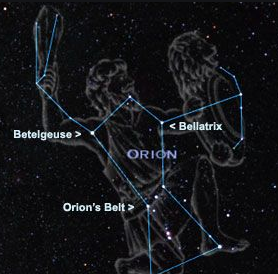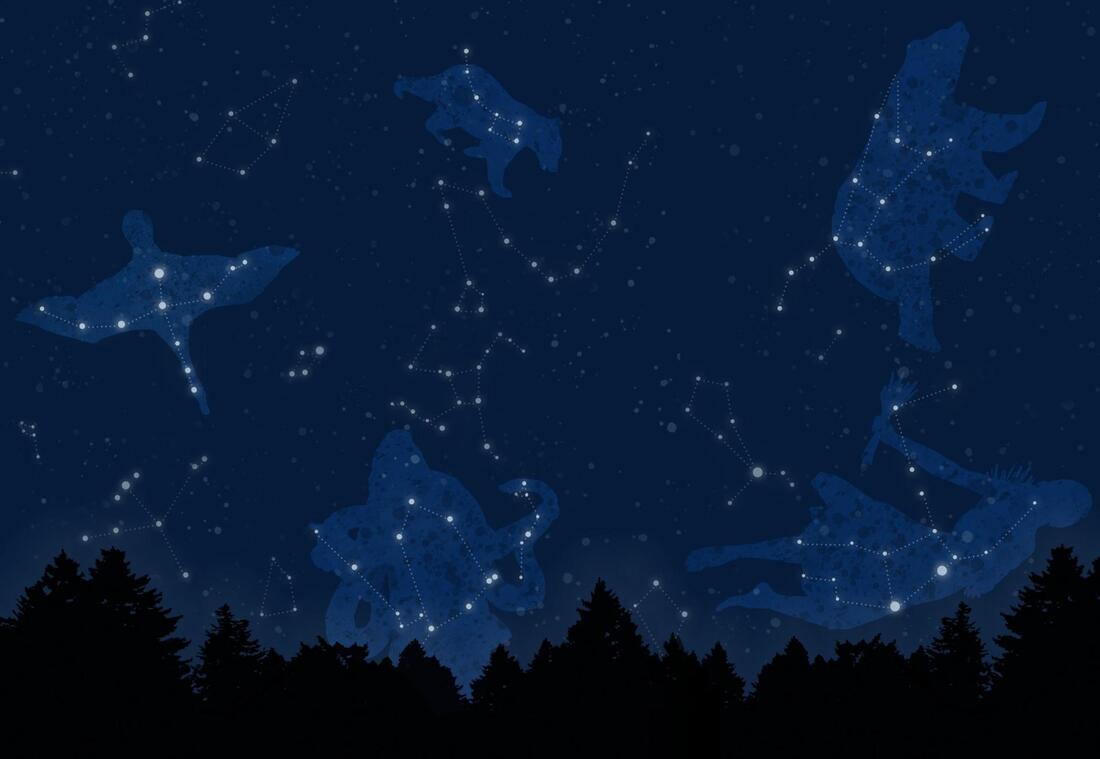|
This week in The Crescent, I have a challenge for you. Take a moment from your day to stop, breathe, and just gaze at the stars. What do you see? If you are a realist, you may say, “Obviously, I see stars, a night’s sky, some trees, and a constellation”. To my wonderful realists, I cannot deny that truth. You are, in fact, interpreting one correct and very logical answer. However, I challenge everyone: Look again. You may see a BUSINESS TIE or, thinking of the cold winter weather, an ICE SCRAPER FOR YOUR CAR. Step back and take a look from a different angle. You may notice that other stars embellish the formation which starts to look something like this: What do you see now? When I look at this picture, I reflect on my summer as a volunteer for a camp in Maine… What do I see? I see a bunch of claws from my first time hauling for LOBSTER. My brother, on the other hand, would tilt his head and see the antennas of the EVIL GRASSHOPPER in his favorite childhood movie, A Bug’s Life. Look again, You may see a WARRIOR WITH HIS ARM RAISED. What is in his other hand? Is it the HEAD OF A LION, a SHIELD or is he wielding an ARROW? If you are an astronomer: You may know this to be the constellation Orion, with the three recognizable stars across the center known as “Orion’s belt”. If you are a mythologist: You would tell me that Orion was a celebrated hunter in Greek mythology. If you are a linguist: You would mention one of the stars in Orion’s belt is called “Alnilam” in Arabic, meaning that it is not a belt, but a string of pearls. You may also remind me that in Spanish the three stars of Orion’s belt are called “Las Tres Marias” or, in places like the Philippines and Puerto Rico, “Los Tres Reyes Magos”. “We all look at the same stars and see different things”. Based on your background in Astronomy, the language you speak, the stories from your culture or your past experiences, we all saw different images in the stars. How does this apply to the classroom? Just like we, as teachers, bring our culture and experiences to the classroom, each child brings a set of experiences with them. It is important to understand why students think and feel the way they do, what struggles they have in life and what makes them feel alive. Getting to know students’ experiences builds relationships and encourages student engagement. Most importantly, it expands our knowledge of the world, making us better listeners, better individuals, better educators. How to do it?
Why spend so much time gazing at stars?
With new experience and new knowledge, our first glance can change over time to form something more elaborate, more beautiful. Sometimes we need to take a look and then... pause... to look harder. Why spend so much time gazing at the stars? Because, my sweet friends, with time our pupils are able to open to the night’s sky, then, and only then, can we see beauty in the dark and our skies are forever brighter.
2 Comments
2/15/2020 08:56:07 pm
I am lucky before I had a science teacher who was hands on to even lessons he teaches. he once thought us about star gazing; that subject couldn't be fun if he is not our teacher. he believes that it is a topic that his students must know that's why I am always looking forward every time he is about to teach us that lesson! My excitement was more than I expected! By the way, I am hoping that all students will be taught this lesson and they could enjoy it!
Reply
Leave a Reply. |
Editor of
|











 RSS Feed
RSS Feed
